Are you wondering if bantam chickens lay eggs? The answer is yes! Bantam chickens, which are just smaller versions of regular chickens, do lay eggs. They might be tinier than the ones you’re used to seeing, but these little eggs are still delicious and perfect for baking or cooking.
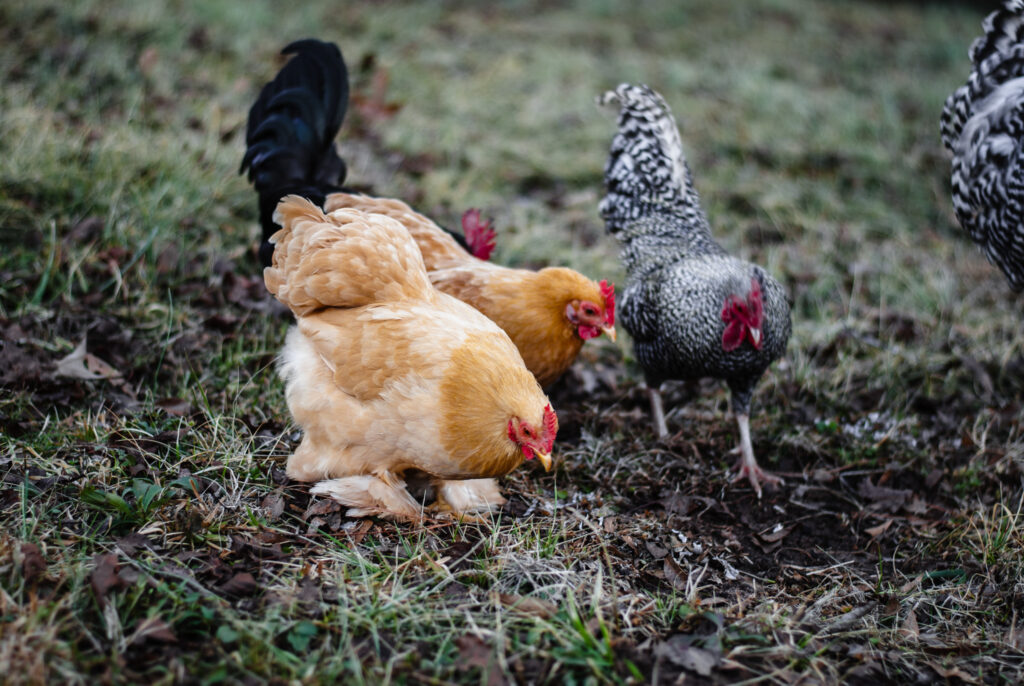
Bantams are great if you have a small backyard or just want some cute chicken pets. So, if you’re thinking about getting bantams, you can look forward to collecting fresh eggs from them.
What are Bantams Anyway?
Bantams are little chickens…really little. Growing up my mama affectionately called them Banty chickens. I never set out to own them myself, but was given a few chicks from a friend several years ago.
Now bantams are some of my favorite chickens in my flock. They’re just so fun to watch.
Bantams are classified in three different ways. True Bantams are breeds that don’t have a larger counterpart. These are breeds like Rosecomb, Sebright, and Serama.
A Miniaturized Bantams are breeds that have a large counterpart. These are breeds like Orpingtons, Polish, and Rhode Island Reds.
Developed Bantams are small breeds that have been bred through selective breeding. These are breeds such as the Belgian Bantams, and the Japanese.
These breeds have become very popular lately and are great pets. They’re small size also means they don’t need as much space as their full-size counterparts. This makes them great for small backyards. Check out their specific coop needs.
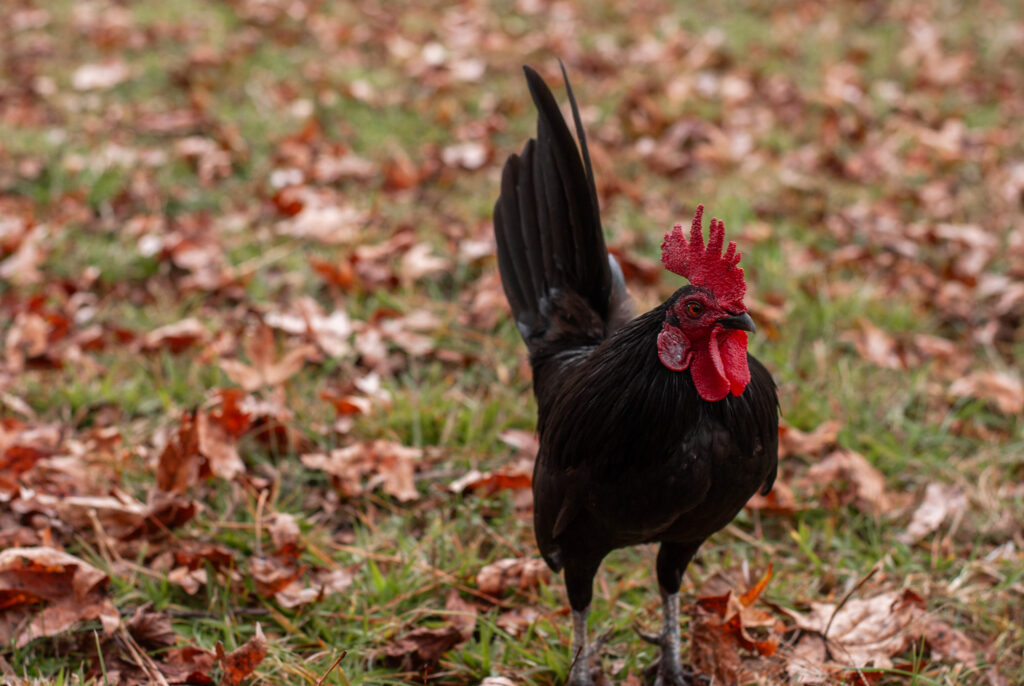
Bantam Personalities
These chickens may be small but they have mighty personalities. Our Japanese Bantam Rooster, Crow, took on our large Delaware Broiler Rooster and almost seriously injured him. I had to keep them separated for a long time. Here’s how I deal with bully chickens.
In my experience raising Bantams and full-size chickens together in a mixed flock, the bantams hold their own quite well. Unfortunately, we lost one of our bantam roosters to a hawk attack. He saved a hen from being killed and died in the fight
Bantams also have cute crows and sounds that aren’t typical of standard breeds. I can hear a significant difference in their natural clucks and crows.
They also move differently and with an ease that larger breeds don’t have. Bantams can fly much higher than the rest of the flock. It’s not uncommon for me to find them high in the trees or on top of their coop. If you’re trying to keep them in an enclosure you’ll need to plan for this.
Some Bantam hens tend to be very broody. They also make excellent mothers. My cochin bantams are the best moms I have in the flock. They consistently hatch large eggs from standard size chickens and raise them to maturity.
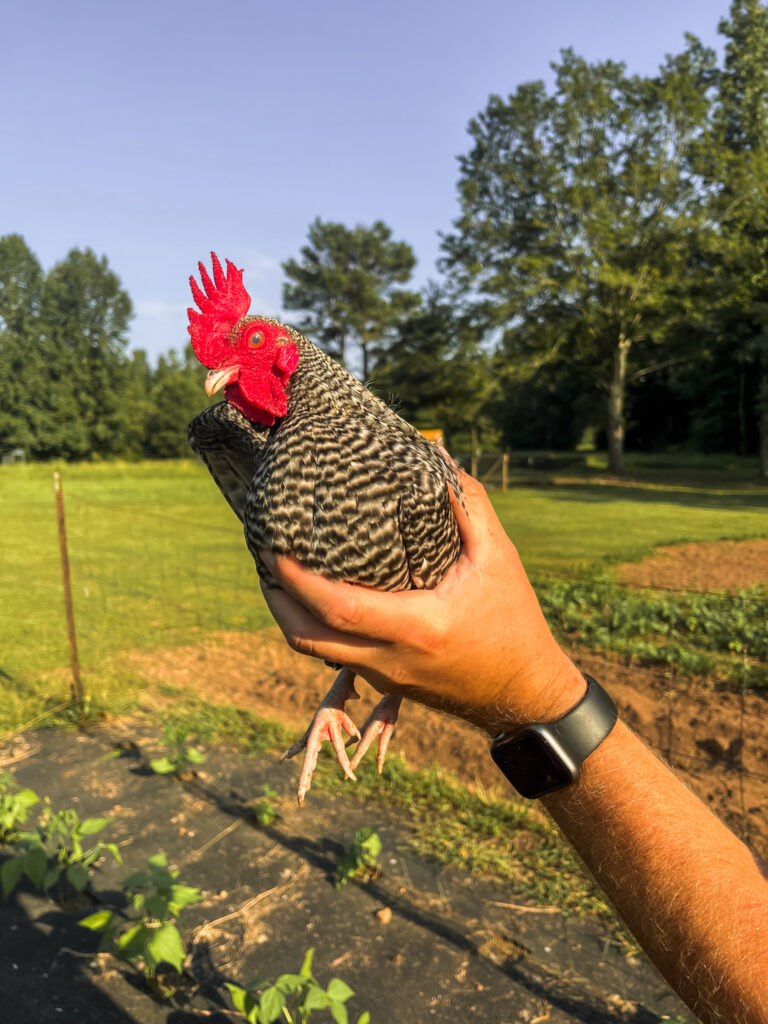
Do Bantams Lay Eggs?
Bantam chickens do lay eggs. However, if you’re looking for good egg production they may not be a good choice.
True Bantam chicken breeds tend to lay fewer eggs than Miniature bantams or Developed bantams. Their egg laying ranges from 50-200 eggs per year.
Some breeds are good layers. My bantam Cochins lay around 4-5 eggs per week, but my Polish lays 1-2 eggs per week. Egg laying can vary greatly depending on the type of bantam chicken.
Bantam breeds also mature a lot slower than other breeds. Many of them don’t start laying eggs until they are 24-30 weeks old which is much slower than their larger counterparts. This is odd since they don’t have as far to grow as their full-size counterparts.
They lay small eggs compared to regular-sized chickens, but they’re just as delicious. In fact, we prefer to boil our smaller eggs. Their smaller size is perfect for a snack or a school lunch.
Bantam eggs are pretty small compared to a standard size chicken’s larger eggs. They usually weigh between 1.25 to 1.75 ounces, which is about half the size of a normal egg. If an egg weighs up to 1.25 ounces, it’s considered tiny, but it’s rare for them to be less than 1 ounce.
If you’re eating them for breakfast you’re going to need a few more than you normally would eat. A bantam chicken egg is half the size of a large chicken egg.
It’s also been my experience that bantam eggs sell great at the farmer’s market. Customers tend to like how small and unique they are. I’ve never had a problem selling them.
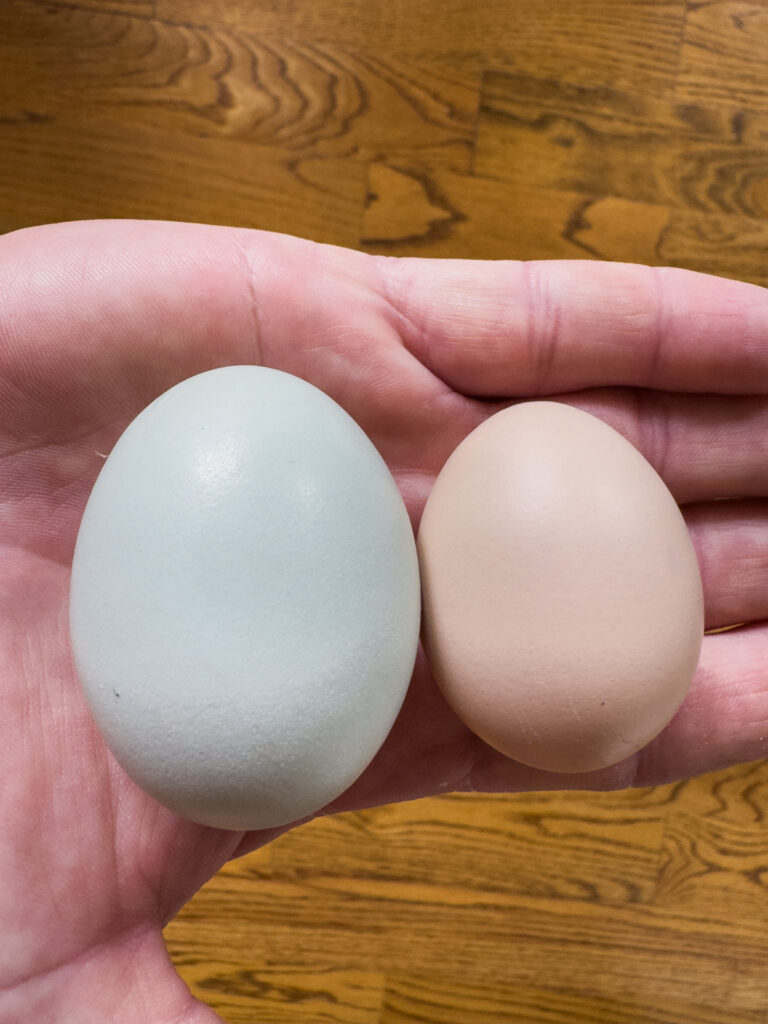
Bantam Sizes
Many Bantam breeds are just as big as a standard chicken. For example, standard size Silke is around 4-5 pounds and my polish is near the same size.
There are some really tiny breeds of bantams like Serama, Dutch Bantam, and Sebright all weighing in at little more than a pound.
Their small size makes them less tolerant to extreme climates. They are more affected by the cold than large fowl. Be sure to keep them nice and cozy in the winter.
If you live in a hot climate, be sure to get breeds that are heat tolerant like Polish.
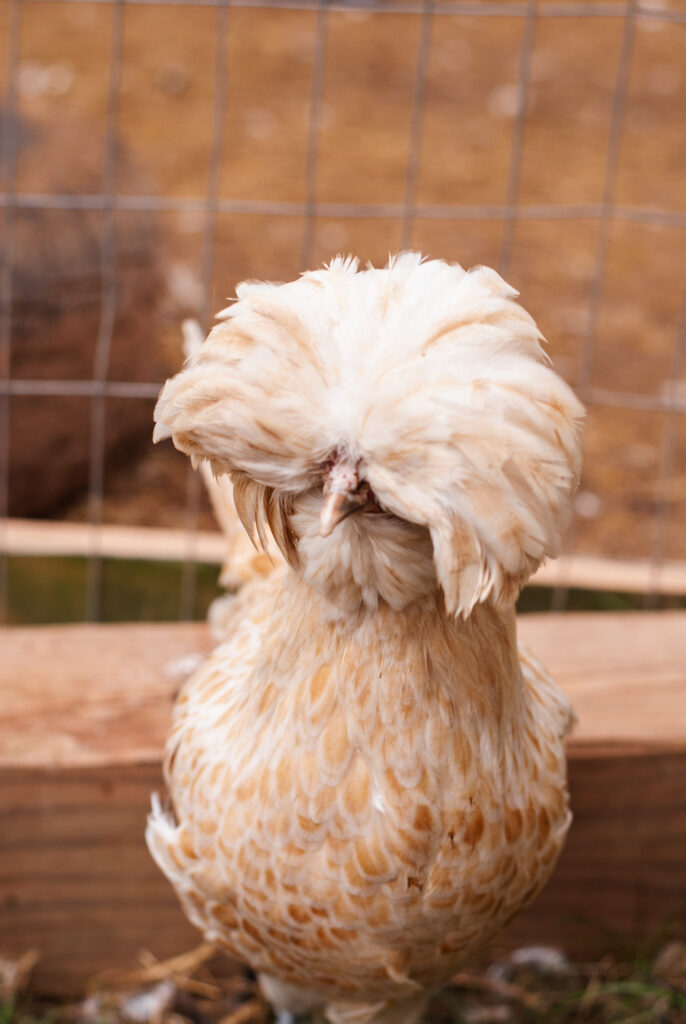
History of Bantams
Bantam chickens have a pretty cool history that goes back many years.
The word “bantam” actually comes from an island in Indonesia called Java, Banten Province . Sailors stopped in Banten and saw these smaller chickens running around. They thought they were so interesting that they brought them back on their ships.
These small chickens were easier to keep in limited space and provided fresh eggs and meat during long journeys.
As these sailors traveled, they spread bantams to other parts of the world. People loved them because they were cute, took up less space than regular chickens, and were easy to take care of.
Plus, they still laid eggs and could be eaten just like larger chicken breeds. Bantam chickens quickly became popular in many countries, and people started breeding them for different colors, patterns.
In Japan, bantam chickens became especially popular. Japanese breeders worked hard to create beautiful bantam varieties, like the Japanese bantam, which has very short legs and beautiful colors like our rooster, Crow.
This breed, along with others, made their way to Europe and America, where chicken keepers continued to breed them. Bantam chickens became a favorite for their quirky looks and the small size of the bird.
During the 19th century, bantam chickens were introduced to Europe and North America, where they became even more popular.
People started keeping them not just for bantam chicken eggs and meat but also as pets . Bantam chickens became a common sight at poultry shows, where they were judged for their appearance and behavior.
Some of the most popular bantam breeds are the Silkie, the Sebright, and the Dutch bantam, with their own unique looks.
Silkies, for example, are known for their fluffy, soft feathers that feel like silk, hence the name. They have a friendly and calm nature, making them great pets. I’ve found that my silkie roosters do tend to be feisty toward other chickens.
Sebrights are one of the oldest bantam breeds and are famous for their beautiful, lacy feather patterns.
Dutch bantams are tiny and active, with a pretty appearance and a feisty personality. Each of these breeds, along with the others, has their own history and special traits that make them stand out.
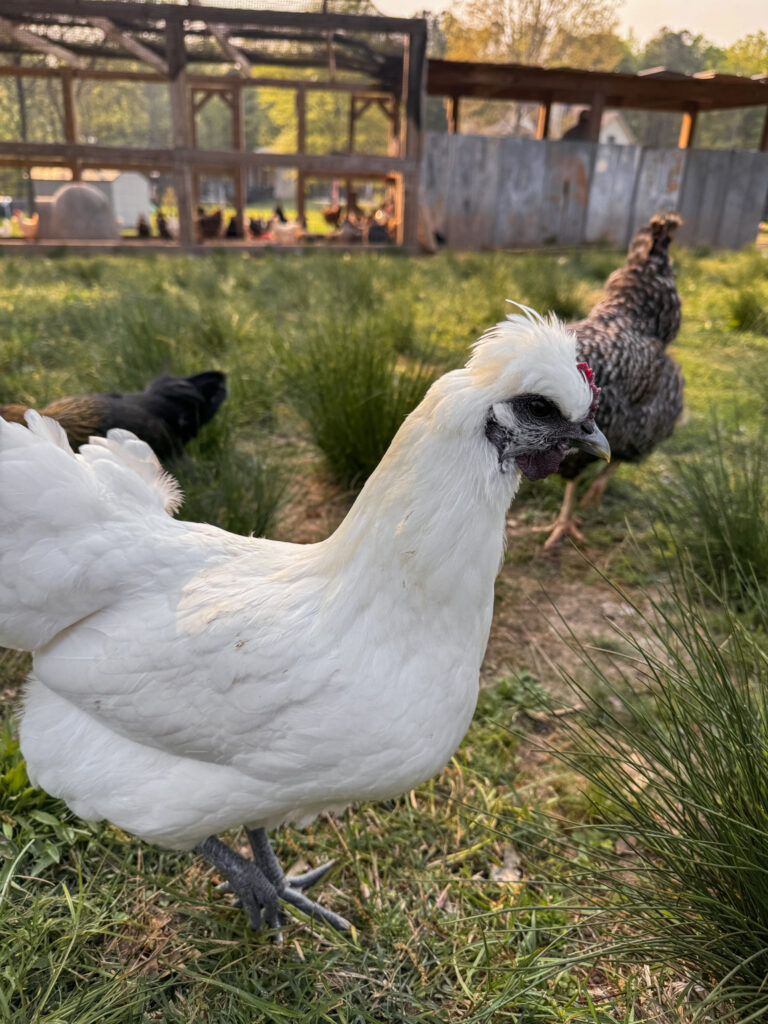
Bantams Today
Today, bantam chickens are still loved by many people around the world. They’re kept in backyards, on small farms, and even in urban areas where space is limited.
Their small size makes them perfect for people who want to keep chickens but don’t have a lot of room. Bantam chickens are also great for kids because they are friendlier and easier to handle than larger chickens.
Bantams also continue to be popular at poultry shows, where breeders come together to show off their birds. These shows are a great way for people to learn more about the different breeds and see the results of careful breeding.
Bantam chickens are judged on their size, shape, feather patterns, and overall appearance. Winning a prize at one of these shows is a big deal for breeders and a testament to their hard work and dedication. More on the history of bantam breeds.
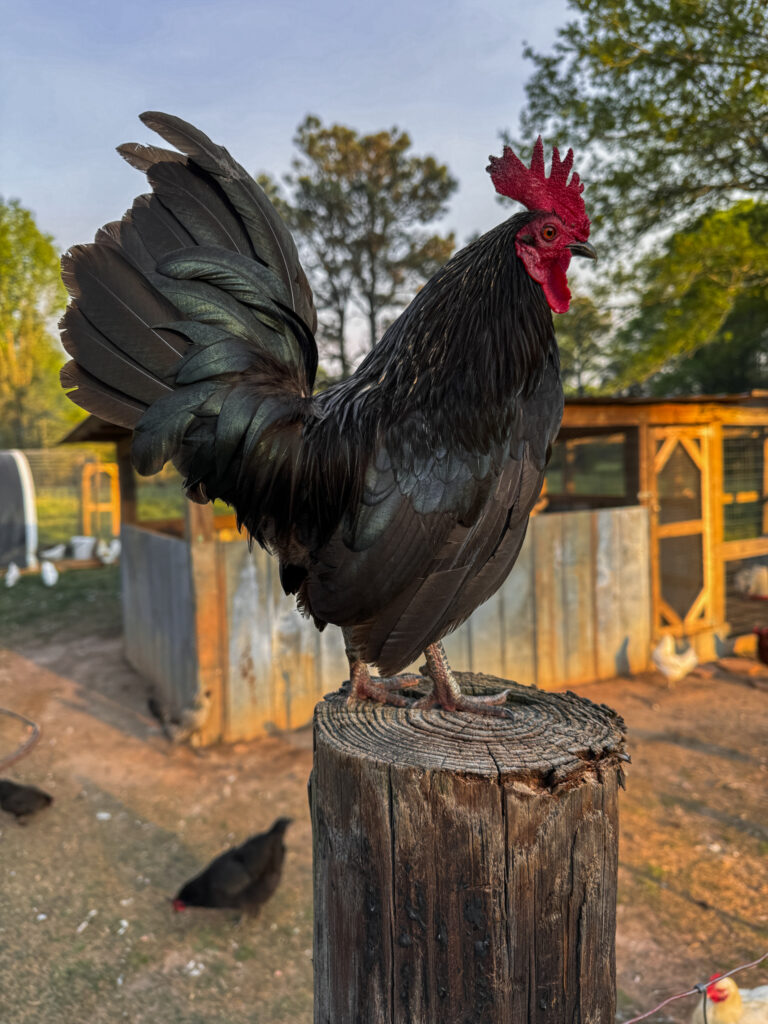
Bantam Chickens FAQs
Do bantam chickens lay eggs?
Yes, they do! Bantam chickens lay eggs just like regular chickens.
How big are bantam eggs?
Bantam eggs are smaller than regular chicken eggs, usually about half the size.
How often do bantam chickens lay eggs?
Bantams can lay eggs almost as often as regular chickens, about 3-5 times a week, depending on the breed.
Are bantam eggs good to eat?
Absolutely! They taste just like regular chicken eggs and are great for cooking and baking.
Do bantam chickens need special care to lay eggs?
Not really. They need a clean coop, good food, fresh water, and a safe place to roam, just like any other chicken.
When do bantam chickens start laying eggs?
Most bantams start laying eggs around 6 months old.
How many eggs do bantam chickens lay in a year?
It varies, but most bantams lay between 50-200 eggs a year.
Do bantam chickens lay eggs in winter?
Some do, but like all chickens, they might slow down or stop laying in the winter due to the shorter daylight hours.
Are bantam chickens good for small backyards?
Definitely! Bantams are smaller and take up less space, making them great for small backyards
Do Bantam chickens Lay Eggs? – Final Thoughts
Bantam chickens are awesome little chickens! They might be small, but they can still provide you with tasty eggs.
Whether you have a big yard or just a small space, bantams are a great choice for anyone who wants fresh eggs and friendly, funny pets. So, if you’re thinking about getting some chickens, don’t let their size fool you.
If you enjoyed this bantam article, please share it! Thanks for visiting my farm.
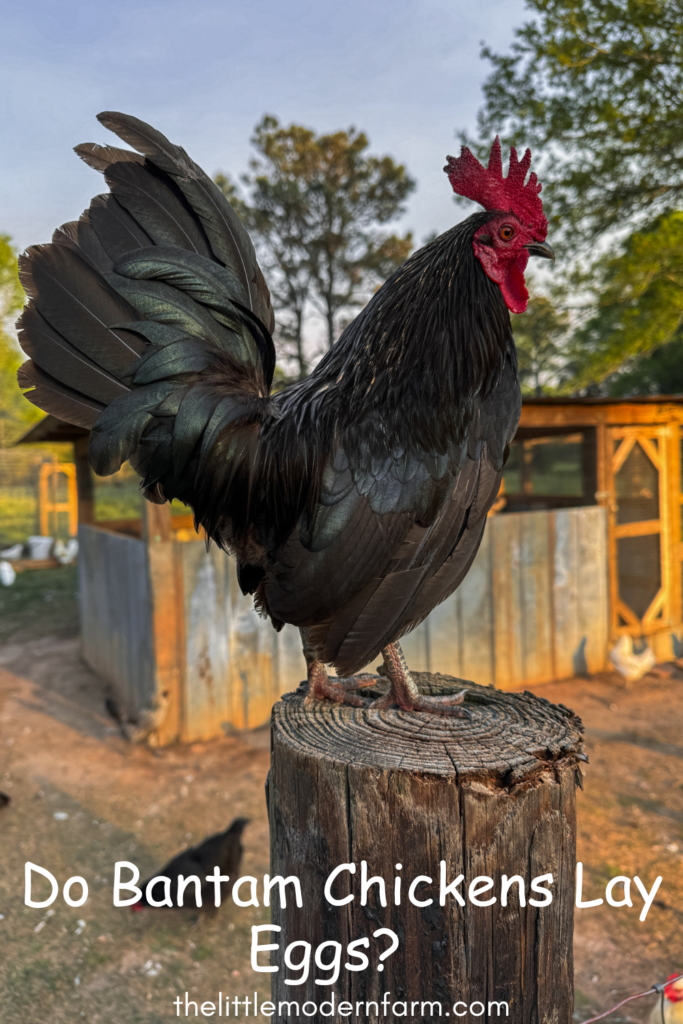
More From The Farm
Learning how to introduce new chicks to the flock can be tricky. Chickens have a very complicated social network, and a pecking order There are certain steps that need to be taken to ensure everyone gets along. However, with a little time and patience, introductions can go smoothly.
[…] to be a favorite for first-time chicken keepers and seasoned pros alike. If you’re curious about bantam chickens, check out my previous post for more […]